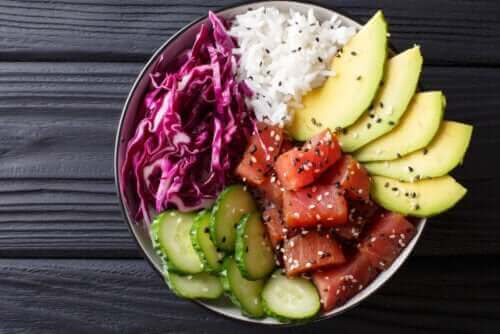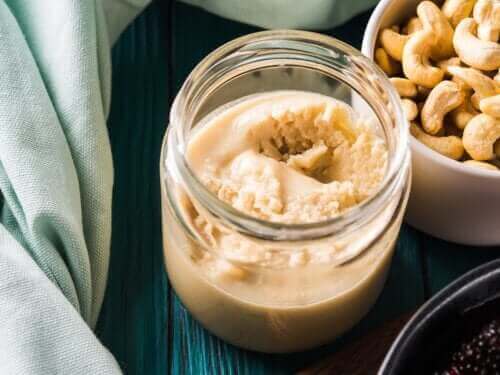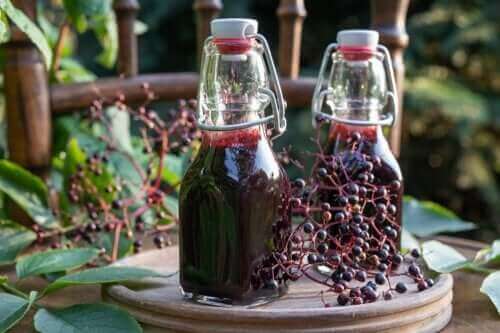六種幫助身體排毒的茶飲
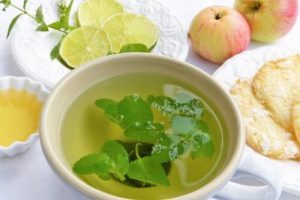
我們的身體每天都暴露在不同的毒素之中。
這些毒素可能是不良飲食,或是空氣污染、氣體排放等環境因素。
這些毒素會導致身體退化及嚴重損傷,如果體內無法去除這些毒素,甚至會導致器官的疾病,因此身體排毒非常重要。
此外,體內毒素的累積會導致以下問題:
雖然不可能排除身體所有毒素,但可以經由飲食來幫助獲得更好的生活品質。
健康飲食除了能清潔身體之外,還能改善整體營養,增加體內的酶含量,同時幫助細胞再生。
此外,為了實施這個飲食計畫,應該要避免以下食物:
- 精製糖
- 麵粉
- 紅肉
- 酒精
- 咖啡
接下來,我們將分享一些簡單的茶飲,你應該將其包括在你的排毒飲食中:
幫助身體排毒的茶飲
1. 綠茶
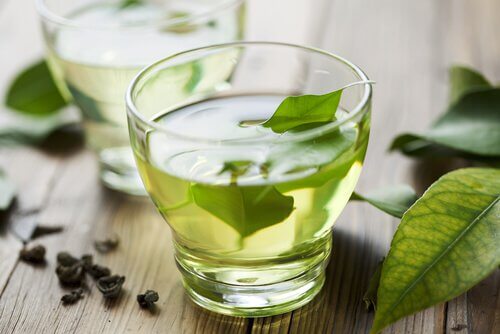
綠茶是一種富含抗氧化劑的飲品,能增強抵抗力,並預防高血壓、流感、氣喘、壓力等疾病。確實是一種促進身體排毒的最佳茶飲。
成分
- 1湯匙綠茶茶葉(10克)
- 1杯水(250毫升)
製作
- 將一湯匙茶葉倒入濾器中。
- 燒一壺水,確保沒有到達沸點,因為煮沸後會讓綠茶帶有苦味。
- 將濾器放到杯子上方,將熱水倒入濾器中,並浸泡3分鐘。
- 如果你喜歡,也可以加入一些蜂蜜,使其變甜。
注意:我們建議在下午前喝綠茶,因為這種茶飲容易引起失眠問題。
2. 檸檬茶
檸檬富含維生素C,是一種非常好的抗氧化劑和殺菌劑。
因此,能幫助對抗自由基,這些自由基會導致老化,並造成身體機能不良。
成分
- 4杯水(1公升)
- 2顆檸檬(使用檸檬皮和檸檬汁)
製作
- 將水煮沸,加入檸檬皮,並浸泡10分鐘。
- 10分鐘後,加入檸檬汁。
- 直接飲用,也可加入視需要加入少量蜂蜜。
3. 百里香茶
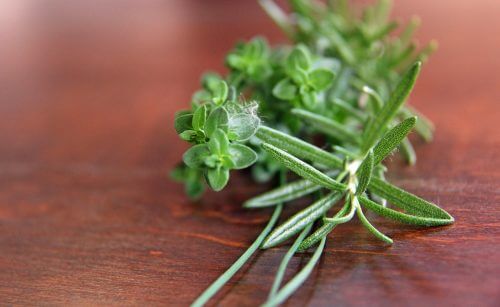
百里香有殺菌和消毒的特性,使其成為改善肝臟功能的理想選擇。肝臟和腎臟負責清除體內的廢物。
成分
- 2杯水(500毫升)
- 2湯匙百里香(20克)
製作
- 將水加熱,沸騰後關火,加入2湯匙百里香。
- 上蓋並浸泡5分鐘。
- 5分鐘後,用濾器過濾。
- 如果你喜歡,可以加入甜菊或蜂蜜讓茶有甜味。
4. 接骨木茶
這種飲品具有重要的利尿和發汗功能,能有效加速體內毒素的排出。
成分
- 2杯水(500毫升)
- 2湯匙接骨木葉(20克)
製作
- 將2湯匙接骨木葉加入滾水中浸泡5分鐘。
- 靜置直到冷卻。
- 過濾並飲用。
5. 芹菜茶
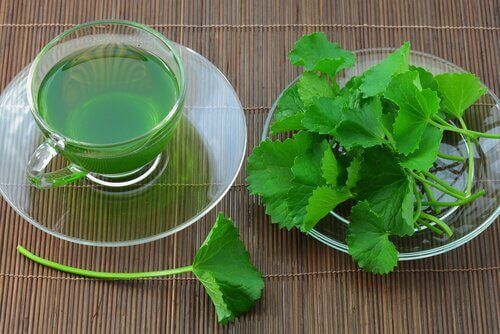
芹菜具有利尿和抗氧化功效,有助於消除體內的體液和毒素。
成分
- 4杯水(1公升)
- 一片完整的芹菜葉
製作
- 將1公升水加熱,煮沸後加入芹菜葉。
- 繼續煮3分鐘,然後關火。
- 上蓋,並淨泡3分鐘。
- 飲用前先過濾。
- 如果你喜歡,可以加入蜂蜜讓茶有甜味。
6. 蒲公英茶
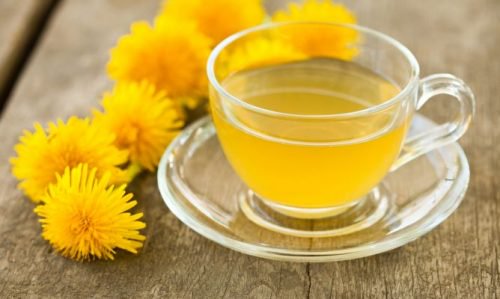
蒲公英是一種抗氧化劑,也能幫助血液淨化,有助於肝臟排毒,還具有消炎作用。
成分
- 1杯水(250毫升)
- 1湯匙蒲公英(10克)
製作
- 首先,將一杯水加熱,煮沸後加入蒲公英。
- 然後,繼續浸泡3分鐘後關火。
- 上蓋,並靜置5分鐘。
- 過濾,如果你喜歡,可以加蜂蜜讓茶有甜味。
這些茶飲能幫助你減重,同時也能幫助身體有效排毒,讓你擁有健康無毒身體。
我們的身體每天都暴露在不同的毒素之中。
這些毒素可能是不良飲食,或是空氣污染、氣體排放等環境因素。
這些毒素會導致身體退化及嚴重損傷,如果體內無法去除這些毒素,甚至會導致器官的疾病,因此身體排毒非常重要。
此外,體內毒素的累積會導致以下問題:
雖然不可能排除身體所有毒素,但可以經由飲食來幫助獲得更好的生活品質。
健康飲食除了能清潔身體之外,還能改善整體營養,增加體內的酶含量,同時幫助細胞再生。
此外,為了實施這個飲食計畫,應該要避免以下食物:
- 精製糖
- 麵粉
- 紅肉
- 酒精
- 咖啡
接下來,我們將分享一些簡單的茶飲,你應該將其包括在你的排毒飲食中:
幫助身體排毒的茶飲
1. 綠茶

綠茶是一種富含抗氧化劑的飲品,能增強抵抗力,並預防高血壓、流感、氣喘、壓力等疾病。確實是一種促進身體排毒的最佳茶飲。
成分
- 1湯匙綠茶茶葉(10克)
- 1杯水(250毫升)
製作
- 將一湯匙茶葉倒入濾器中。
- 燒一壺水,確保沒有到達沸點,因為煮沸後會讓綠茶帶有苦味。
- 將濾器放到杯子上方,將熱水倒入濾器中,並浸泡3分鐘。
- 如果你喜歡,也可以加入一些蜂蜜,使其變甜。
注意:我們建議在下午前喝綠茶,因為這種茶飲容易引起失眠問題。
2. 檸檬茶
檸檬富含維生素C,是一種非常好的抗氧化劑和殺菌劑。
因此,能幫助對抗自由基,這些自由基會導致老化,並造成身體機能不良。
成分
- 4杯水(1公升)
- 2顆檸檬(使用檸檬皮和檸檬汁)
製作
- 將水煮沸,加入檸檬皮,並浸泡10分鐘。
- 10分鐘後,加入檸檬汁。
- 直接飲用,也可加入視需要加入少量蜂蜜。
3. 百里香茶

百里香有殺菌和消毒的特性,使其成為改善肝臟功能的理想選擇。肝臟和腎臟負責清除體內的廢物。
成分
- 2杯水(500毫升)
- 2湯匙百里香(20克)
製作
- 將水加熱,沸騰後關火,加入2湯匙百里香。
- 上蓋並浸泡5分鐘。
- 5分鐘後,用濾器過濾。
- 如果你喜歡,可以加入甜菊或蜂蜜讓茶有甜味。
4. 接骨木茶
這種飲品具有重要的利尿和發汗功能,能有效加速體內毒素的排出。
成分
- 2杯水(500毫升)
- 2湯匙接骨木葉(20克)
製作
- 將2湯匙接骨木葉加入滾水中浸泡5分鐘。
- 靜置直到冷卻。
- 過濾並飲用。
5. 芹菜茶

芹菜具有利尿和抗氧化功效,有助於消除體內的體液和毒素。
成分
- 4杯水(1公升)
- 一片完整的芹菜葉
製作
- 將1公升水加熱,煮沸後加入芹菜葉。
- 繼續煮3分鐘,然後關火。
- 上蓋,並淨泡3分鐘。
- 飲用前先過濾。
- 如果你喜歡,可以加入蜂蜜讓茶有甜味。
6. 蒲公英茶

蒲公英是一種抗氧化劑,也能幫助血液淨化,有助於肝臟排毒,還具有消炎作用。
成分
- 1杯水(250毫升)
- 1湯匙蒲公英(10克)
製作
- 首先,將一杯水加熱,煮沸後加入蒲公英。
- 然後,繼續浸泡3分鐘後關火。
- 上蓋,並靜置5分鐘。
- 過濾,如果你喜歡,可以加蜂蜜讓茶有甜味。
這些茶飲能幫助你減重,同時也能幫助身體有效排毒,讓你擁有健康無毒身體。
- Alzohairy, M. A. (2016). Therapeutics Role of Azadirachta indica (Neem) and Their Active Constituents in Diseases Prevention and Treatment. Evidence-Based Complementary and Alternative Medicine, 2016, 7382506. https://www.hindawi.com/journals/ecam/2016/7382506/
- Carneiro, D. M., Jardim, T. V., Araújo, Y. C. L., Arantes, A. C., Sousa, A. C., Barroso, W. K. S., Sousa, A. L. L., da Cunha, L. C., Cirilo, H. N. C., Bara, M. T. F., & Jardim, P. C. B. (2019). Equisetum arvense: New Evidences Supports Medical use in Daily Clinic. Pharmacognosy Reviews, 13(26), 50-58. https://www.phcogrev.com/article/2019/13/26/105530phrev201924?qt-sidebar_tabs=1
- Dauqan, E. M. A., & Abdullah, A. (2017). Medicinal and Functional Values of Thyme (Thymus vulgaris L.) Herb. Journal of Applied Biology & Biotechnology, 5(2), 17-22. https://www.jabonline.in/abstract.php?article_id=188
- Dias, M. I., Barros, L., Morales, P., Sanchez-Mata, M. C., Oliveira, M. B. P., & Ferreira, I. C. (2015). Nutritional parameters of infusions and decoctions obtained from Fragaria vesca L. roots and vegetative parts. LWT-Food Science and Technology, 62(1), 32-38. https://www.sciencedirect.com/science/article/abs/pii/S002364381500050X
- Gowher, G. (2019). Therapeutic value of Arctium Lappa Linn – A review. Asian Journal of Pharmaceutical and Clinical Research, 12(7), 53-59. https://journals.innovareacademics.in/index.php/ajpcr/article/view/33870
- Grauso, L., Emrick, S., de Falco, B., Lanzotti, V., & Bonanomi, G. (2019). Common dandelion: a review of its botanical, phytochemical and pharmacological profiles. Phytochemistry Reviews, 18, 1115-1132. https://link.springer.com/article/10.1007/s11101-019-09622-2?uid={uid}
- Griffin, R. M. (7 de noviembre de 2022). Ginger. WebMD. https://www.webmd.com/vitamins-and-supplements/ginger-uses-and-risks
-
Islas, J. F., Acosta, E., G-Buentello, Z., Delgado-Gallegos, J. L., Moreno-Treviño, M. G., Escalante, B., & Moreno-Cuevas, J. E. (2020). An overview of Neem (Azadirachta indica) and its potential impact on health. Journal of Functional Foods, 74, 1-13. https://www.sciencedirect.com/science/article/pii/S1756464620303959
- Jan, K. N., zarafshan, K., & Singh, S. (2017). Stinging nettle (Urtica dioica L.): a reservoir of nutrition and bioactive components with great functional potential. Food Measure, 11, 423-433. https://link.springer.com/article/10.1007/s11694-016-9410-4
- Karimpour-Reihan, S., Firuzei, E., Khosravi, M., & Abbaszade, M. (2018). Coagulation Disorder following Red Clover (Trifolium Pratense) Misuse: a Case Report. Advanced journal of emergency medicine, 2(2), 1-2. https://www.ncbi.nlm.nih.gov/pmc/articles/PMC6549048/
- Kooti, W., & Daraei, N. (2017). A Review of the Antioxidant Activity of Celery (Apium graveolens L). Journal of Evidence-Based Complementary & Alternative Medicine, 22(4), 1029-1034. https://journals.sagepub.com/doi/full/10.1177/2156587217717415
- Kolodziejczyk-Czepas, J. (2016). Trifolium species – the latest findings on chemical profile, ethnomedicinal use and pharmacological properties, Journal of Pharmacy and Pharmacology, 68(7), 845-861. https://academic.oup.com/jpp/article/68/7/845/6128256
- Młynarczyk, K., Walkowiak-Tomczak, D., & Łysiak, G. P. (2018). Bioactive properties of Sambucus nigra L. as a functional ingredient for food and pharmaceutical industry. Journal of Functional Foods, 40, 377-390. https://www.sciencedirect.com/science/article/pii/S1756464617306977
- Organización de las Naciones Unidas. (10 de marzo de 2023). Natural toxins in food. https://www.who.int/news-room/fact-sheets/detail/natural-toxins-in-food
- Pastoriza, S., Mesías, M., Cabrera, C., & Rufián-Henares, J. A. (2017). Healthy properties of green and white teas: an update. Food & Function, 8(8), 2650-2662. https://pubs.rsc.org/en/content/articlelanding/2017/fo/c7fo00611j
- Rafique, S., Hassan, S. M., Mughal, S. S., Hassan, S. K., Shabbir, N., Perveiz, S., Mushtaq, M., & Farman, M. (2020). Biological attributes of lemon: A review. Journal of Addiction Medicine and Therapeutic Science, 6(1), 30-34. https://www.researchgate.net/publication/342157456_Biological_attributes_of_lemon_A_review
- Rameshrad, M., Razavi, B. M., & Hosseinzadeh, H. (2017). Protective effects of green tea and its main constituents against natural and chemical toxins: A comprehensive review. Food and Chemical Toxicology, 100, 115-137. https://www.sciencedirect.com/science/article/abs/pii/S0278691516304537
- Ratnani, S., & Malik, S. (2022). Therapeutic Properties of Green Tea: A Review. Journal of Multidisciplinary Applied Natural Science, 2(2), 90-102. https://journal.pandawainstitute.com/index.php/jmans/article/view/117
- Samundy Kumbhakar, R., & Verma, B. B. (2016). Effect of warm lemon water drink on selected physical parameters among the overweight female nursing students of RIMS & R, U.P. International Journal of Nursing Research and Practice, 3(1), 9-12. https://fischerinstitute.com/wp-content/uploads/2023/09/Vol-3-No-2-3-Ms-Samundy.pdf
- Wang, S., Qiu, Y., Gan, R. Y., & Zhu, F. (2022). Chemical constituents and biological properties of Pu-erh tea. Food Research International, 154, 110899. https://www.sciencedirect.com/science/article/abs/pii/S0963996921007997
- WebMD. (s.f.). Burdock – Uses, Side Effects, and More. https://www.webmd.com/vitamins/ai/ingredientmono-111/burdock/
- WebMD. (s.f.). Celery – Uses, Side Effects, and More. https://www.webmd.com/vitamins/ai/ingredientmono-882/celery
- WebMD. (s.f.). Elderberry – Uses, Side Effects, and More. https://www.webmd.com/vitamins/ai/ingredientmono-434/elderberry
- WebMD. (s.f.). Green Tea – Uses, Side Effects, and More. https://www.webmd.com/vitamins/ai/ingredientmono-960/green-tea
- WebMD. (s.f.). Neem – Uses, Side Effects, and More. https://www.webmd.com/vitamins/ai/ingredientmono-577/neem
- WebMD. (s.f.). Pu-Erh Tea – Uses, Side Effects, and More. https://www.webmd.com/vitamins/ai/ingredientmono-1169/pu-erh-tea
- WebMD. (s.f.). Red Clover – Uses, Side Effects, and More. https://www.webmd.com/vitamins/ai/ingredientmono-308/red-clover
- WebMD. (s.f.). Stinging Nettle – Uses, Side Effects, and More. https://www.webmd.com/vitamins/ai/ingredientmono-664/stinging-nettle
- WebMD. (s.f.). Thyme – Uses, Side Effects, and More. https://www.webmd.com/vitamins/ai/ingredientmono-823/thyme
- Yahyazadeh, R., Baradaran Rahimi, V., Yahyazadeh, A., Mohajeri, S. A., & Askari, V. R. (2021). Promising effects of gingerol against toxins: A review article. BioFactors, 47(6), 885-913. https://iubmb.onlinelibrary.wiley.com/doi/abs/10.1002/biof.1779
此文本僅供資訊目的使用,並不取代與專業人士的諮詢。如有疑問,請諮詢您的專家。
